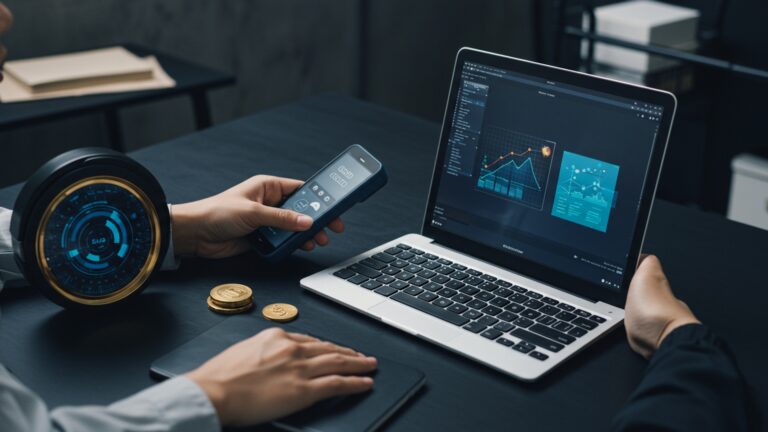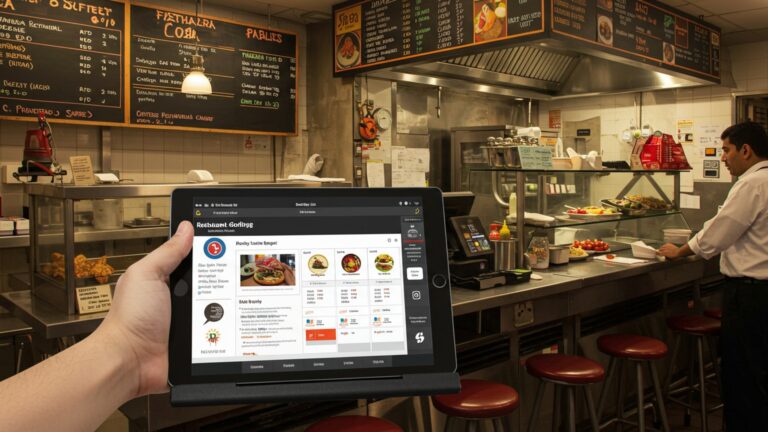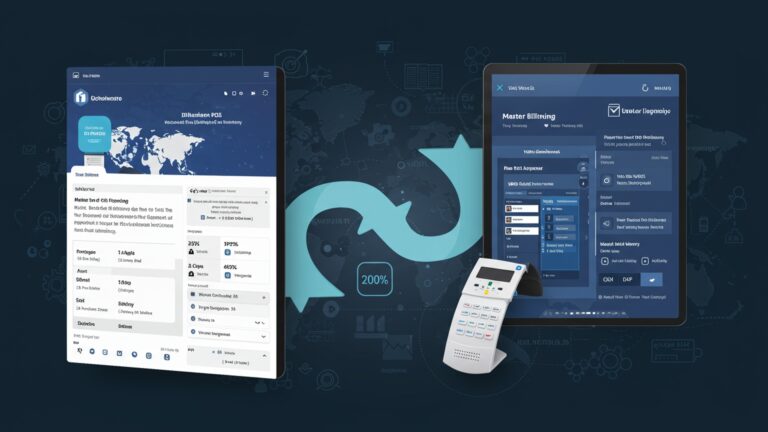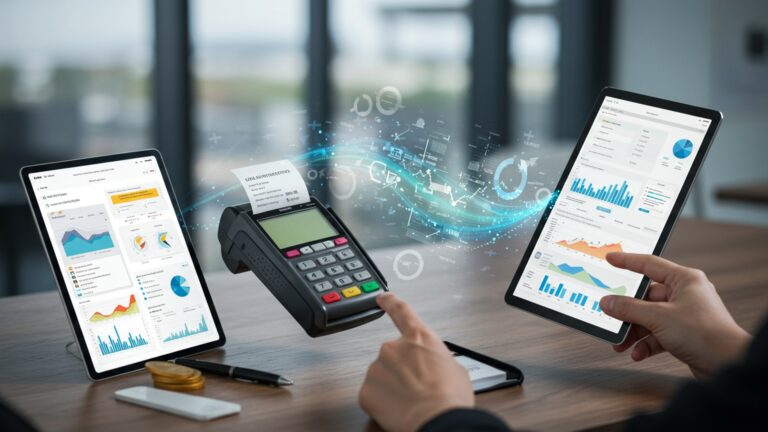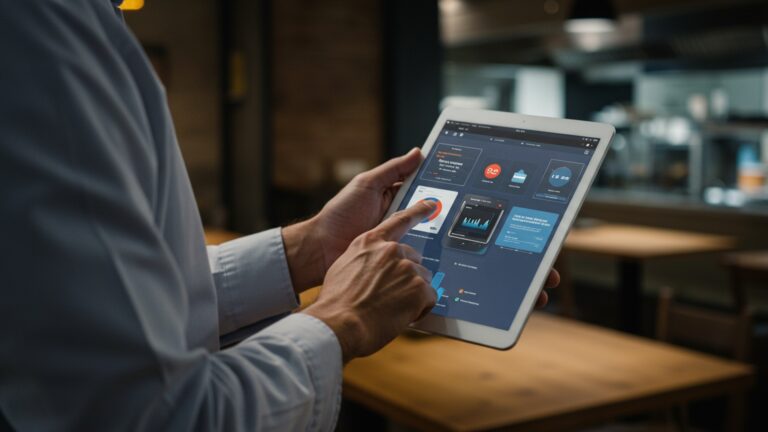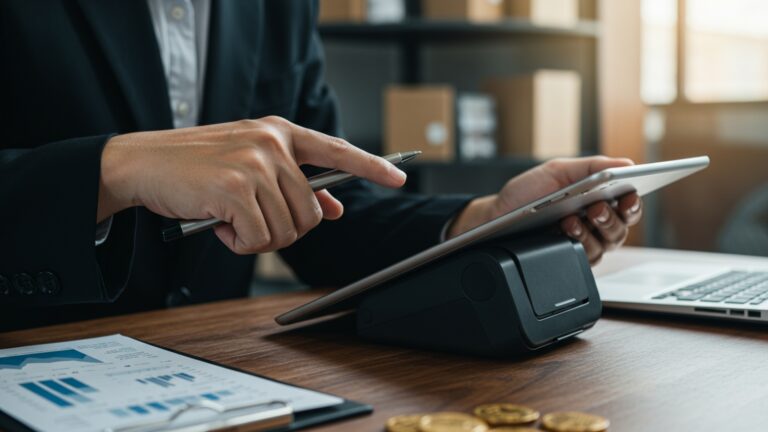How to Master POS Billing Software for Efficient Retail Operations
In today’s hyper-competitive retail landscape, efficient operations are paramount. the core of this efficiency lies within advanced POS billing software. Far from mere transaction processors, modern systems have evolved into sophisticated hubs for real-time inventory tracking, integrated customer relationship management (CRM). invaluable sales analytics. Mastering this technology, particularly with the rapid adoption of omnichannel strategies and contactless payment methods, empowers retailers to streamline checkout experiences, minimize stock discrepancies. glean actionable insights from every customer interaction. Leveraging cloud-based POS billing software effectively transforms raw data into strategic advantage, ensuring seamless retail flows and enhanced profitability in an ever-evolving market.

Understanding the Core of POS Billing Software
At the heart of modern retail operations lies Point of Sale (POS) technology. specifically, pos billing software. This isn’t just a fancy cash register; it’s a comprehensive system designed to streamline every aspect of a sales transaction, from ringing up items to managing inventory and customer data. Understanding its fundamental role is the first step towards mastering it.
A POS system typically comprises both hardware and software components. The hardware can include a monitor, barcode scanner, receipt printer, cash drawer. credit card reader. The star, But, is the pos billing software – the program that runs on the hardware, orchestrating all functions. It acts as the central hub for processing sales, managing product data, tracking customer interactions. generating vital business reports.
Key terms to grasp:
- Point of Sale (POS)
- POS System
- POS Billing Software
- Inventory Management
- CRM (Customer Relationship Management)
The specific location where a transaction occurs between a merchant and a customer.
The combination of hardware and software used to complete sales transactions.
The application that powers the POS system, handling item lookup, price calculation, payment processing. receipt generation.
The process of tracking goods from suppliers to customers, including stock levels, reorder points. sales data.
Systems and strategies used to manage and assess customer interactions and data throughout the customer lifecycle.
The primary benefit of robust pos billing software is enhanced efficiency. It automates manual tasks, reduces human error, speeds up transaction times. provides real-time data, allowing retailers to make informed decisions swiftly. For example, a busy grocery store can process hundreds of transactions per hour with a well-configured POS, something impossible with manual systems.
Key Features to Look for in Advanced POS Billing Software
Choosing the right pos billing software is critical. Its capabilities directly impact your operational efficiency and potential for growth. Modern solutions offer a suite of features that extend far beyond simple transaction processing.
- Comprehensive Inventory Management
- Real-time stock tracking across multiple locations.
- Automated reorder points and vendor management.
- Batch and serial number tracking.
- Support for product variants (size, color, style).
- Inventory adjustments for damages, returns, or transfers.
- Robust Sales Tracking & Reporting
- Detailed sales data by item, category, employee. time period.
- Customizable reports (e. g. , daily sales, best-selling products, profit margins).
- Ability to identify sales trends and peak hours.
- Exportable data for further analysis.
- Integrated Customer Relationship Management (CRM)
- Capture customer details, purchase history. preferences.
- Support loyalty programs, discounts. gift cards.
- Personalized marketing capabilities based on purchase behavior.
- Employee Management
- Time clock functionality for staff attendance.
- Permission-based access levels for different roles (cashier, manager).
- Sales performance tracking for individual employees.
- Seamless Payment Processing Integration
- Support for various payment methods (cash, credit/debit cards, mobile payments).
- Integration with preferred payment gateways.
- Secure transaction processing (PCI DSS compliance).
- Multi-store and E-commerce Capabilities
- Centralized management for multiple retail locations.
- Synchronization of inventory, sales. customer data between physical stores and online platforms.
- Unified reporting across all sales channels.
Consider a small boutique expanding to an online presence. A pos billing software that seamlessly integrates physical store inventory with the e-commerce platform prevents overselling and ensures accurate stock levels, providing a consistent customer experience.
The Implementation Journey: Setting Up Your POS System
Implementing new pos billing software is a significant undertaking that requires careful planning and execution. A structured approach ensures a smooth transition and maximizes the system’s benefits.
- Assessment and Selection
- Hardware Setup
- Software Installation and Configuration
- Data Migration
- Staff Training
- Go-Live and Post-Implementation Support
Begin by evaluating your specific business needs. What are your daily transaction volumes? Do you have multiple locations? What kind of reporting is crucial for your business intelligence? Research various pos billing software options, comparing their features, scalability, pricing models (subscription vs. one-time purchase). vendor support.
| Feature | Cloud-Based POS | On-Premise POS |
|---|---|---|
| Initial Cost | Lower (subscription) | Higher (hardware, license) |
| Maintenance | Managed by vendor | Managed by retailer |
| Accessibility | Anywhere, any device | Limited to specific devices/network |
| Scalability | Easily scalable | Requires hardware upgrades |
| Data Security | Vendor responsibility (often high) | Retailer responsibility |
Once the software is chosen, acquire and set up the necessary hardware. This includes POS terminals, barcode scanners, receipt printers, cash drawers. card readers. Ensure compatibility with your chosen pos billing software.
Install the pos billing software on your hardware. This involves configuring settings specific to your business, such as tax rates, employee roles, discount structures. receipt customization. Many modern cloud-based POS solutions minimize this step, offering web-based access.
This is a critical phase. Import your existing product catalog (SKUs, prices, descriptions, stock levels), customer databases. vendor details into the new system. Accuracy here is paramount to avoid operational disruptions.
Thorough training for all employees who will interact with the pos billing software is non-negotiable. Cover basic transaction processing, returns, inventory lookups, end-of-day procedures. troubleshooting common issues. Role-specific training is beneficial.
// Example of a simplified training flow for a new cashier 1. Log in to POS system. 2. Scan items or search for products. 3. Apply discounts/promotions. 4. Select payment method (cash, card). 5. Process payment. 6. Print receipt. 7. Handle returns (manager override may be needed).
Launch the new system. Be prepared for initial hiccups and ensure readily available support from your vendor or an internal IT team. Continuous monitoring and feedback collection will help optimize the system’s performance.
Mastering Daily Operations with POS Billing Software
Once your pos billing software is set up, mastering its daily use is key to unlocking maximum efficiency. This involves more than just ringing up sales; it’s about leveraging every feature to optimize your retail workflow.
- Efficient Transaction Processing
- Seamless Returns, Exchanges. Refunds
- Accurate End-of-Day Procedures
- Proactive Inventory Adjustments
- Leveraging Reporting for Business Insights
Cashiers should be proficient in quickly scanning items, applying discounts, handling multiple payment types. processing gift cards or loyalty points. Speed and accuracy at the checkout are crucial for customer satisfaction. For instance, using a barcode scanner significantly reduces manual entry errors and speeds up checkout lines, especially during peak hours.
A well-trained staff member can efficiently process customer returns or exchanges using the pos billing software. This includes locating the original transaction, restocking items (or marking them as damaged). issuing refunds or store credit. Clear policies integrated into the software ensure consistency and prevent fraud.
At the close of business, the pos billing software facilitates reconciliation. This involves counting the cash drawer, verifying credit card transactions. generating a daily sales summary. This process helps identify discrepancies, prepare deposits. ensure financial accuracy. For example, a manager can run an “X-report” during the day to check current sales. a “Z-report” to finalize and clear the register.
Regularly utilize the inventory features of your pos billing software. This includes receiving new stock, conducting cycle counts. making adjustments for damaged goods or discrepancies. Accurate inventory data prevents stockouts and overstocking, both of which can lead to lost sales or increased carrying costs. A real-world application could be performing a spot check on a popular item and updating the count directly in the POS if it differs from the system’s record.
Beyond daily tasks, the true power of pos billing software lies in its reporting capabilities. Regularly review sales reports, product performance, employee metrics. customer purchasing trends. This data helps identify best-selling products, slow-moving inventory, peak sales periods. opportunities for staff training or promotional campaigns.
For example, analyzing “sales by hour” reports might reveal that your store experiences a significant dip in sales between 2 PM and 4 PM, prompting you to consider a happy hour discount or special promotion during that time to drive traffic.
Advanced Strategies for Maximizing POS Billing Software Efficiency
To truly master your pos billing software, you need to move beyond basic usage and implement advanced strategies that leverage its full potential. This means integrating it into your broader business intelligence and operational workflows.
- Automating Inventory Reorders
- Personalized Marketing through CRM Data
- Implementing Loss Prevention Techniques
- Utilizing Analytics for Strategic Decisions
- Integrating with Accounting Software
Configure your pos billing software to automatically suggest or even initiate purchase orders when stock levels hit predefined minimums. This minimizes manual effort, reduces the risk of stockouts. ensures popular items are always available. This is particularly useful for fast-moving consumer goods (FMCG) where inventory turnover is high.
Utilize the customer data captured by your pos billing software. Segment customers based on purchase history, frequency, or value. Then, craft targeted email campaigns or loyalty offers. For instance, if your POS identifies customers who frequently buy coffee, you can send them a special discount on new coffee bean arrivals or a “buy 10, get 1 free” offer.
Modern pos billing software often includes features to deter theft and fraud. This can involve tracking voids, returns. discounts by employee, setting authorization levels for high-value transactions, or integrating with security cameras. Monitoring discrepancies between inventory counts and sales data can highlight potential shrinkage issues.
Dive deep into the analytical tools provided by your pos billing software. Beyond basic sales reports, look for insights into product profitability, customer lifetime value. marketing campaign effectiveness. This data can inform pricing strategies, product assortment decisions. future expansion plans. For a multi-location retailer, comparing performance across stores can reveal best practices or areas needing improvement.
Connect your pos billing software with your accounting platform (e. g. , QuickBooks, Xero). This eliminates manual data entry, reduces errors. ensures that sales, expenses. inventory data are automatically synchronized. This integration streamlines financial reporting, tax preparation. overall financial management, saving considerable time and resources.
Troubleshooting Common POS Billing Software Issues
Even the most robust pos billing software can encounter issues. Knowing how to troubleshoot common problems efficiently minimizes downtime and keeps your operations running smoothly.
- Connectivity Problems
- Issue
- Solution
- Software Glitches/Freezes
- Issue
- Solution
- Payment Processing Errors
- Issue
- Solution
- Hardware Malfunctions
- Issue
- Solution
- Data Backup and Recovery
- Issue
- Solution
POS terminal not connecting to the network or cloud server.
Check Wi-Fi/Ethernet connections, restart routers/modems, verify network settings on the POS device. For cloud-based systems, check your internet service provider’s status and the POS vendor’s service status page.
The pos billing software is slow, unresponsive, or crashes.
Restart the application or the entire POS system. Ensure the software is updated to the latest version. Check system resources (RAM, CPU usage) if it’s an on-premise system. Clear temporary files or cached data if recommended by the vendor.
Credit card transactions failing or taking too long.
Verify the internet connection to the payment terminal. Check the payment gateway status. Confirm card reader is clean and functioning. Ensure the payment integration settings within the pos billing software are correct. Contact your payment processor if the issue persists across multiple transactions.
Barcode scanner not reading, receipt printer not printing, cash drawer not opening.
Check physical connections (USB, power cables). Restart the specific peripheral. Ensure drivers are installed and updated. For printers, check paper and ink/toner levels. Many POS systems have diagnostic tools for hardware.
Data loss due to system failure or human error.
Implement a regular backup schedule. For cloud POS, data is typically backed up by the vendor. For on-premise solutions, ensure automated backups to external drives or cloud storage are in place. Know your data recovery procedure and test it periodically.
In any troubleshooting scenario, the first step should always be to consult the pos billing software vendor’s support documentation or contact their customer service. They often have specific guidance for common issues related to their product.
Future Trends in POS Billing Software
The landscape of pos billing software is constantly evolving, driven by technological advancements and changing consumer expectations. Staying abreast of these trends is crucial for retailers looking to maintain a competitive edge and optimize their operations.
- Cloud-Based POS Dominance
- Mobile POS (mPOS) Proliferation
- AI and Machine Learning Integration
- Enhanced Security Features
- Voice Commerce Integration
- Self-Service Kiosks and Smart Carts
The shift from on-premise to cloud-based pos billing software is accelerating. Cloud solutions offer unparalleled flexibility, accessibility from anywhere, automatic updates. reduced upfront hardware costs. They also facilitate seamless integration with e-commerce platforms and other business tools, creating a truly omnichannel retail experience. This scalability is a huge advantage for growing businesses.
The use of tablets and smartphones as POS terminals is becoming mainstream. mPOS allows businesses to process transactions on the go, ideal for pop-up shops, food trucks, or even queue busting in large stores. This flexibility enhances customer service by bringing the checkout experience directly to the customer, improving efficiency and convenience.
Artificial intelligence (AI) and machine learning (ML) are beginning to enhance pos billing software capabilities significantly. This includes predictive analytics for inventory management (forecasting demand), personalized product recommendations based on customer purchase history. even fraud detection by identifying unusual transaction patterns. For example, AI could suggest optimal pricing adjustments in real-time based on market demand and competitor prices.
With increasing cyber threats, robust security is paramount. Future pos billing software will feature even stronger encryption, tokenization for payment processing, multi-factor authentication. advanced fraud detection algorithms to protect sensitive customer and business data. Compliance with evolving data protection regulations (like GDPR or CCPA) will be a core focus.
As voice assistants become more prevalent, expect to see integration with pos billing software, allowing retailers to manage inventory, process orders, or retrieve sales reports using voice commands. While still emerging, this offers a hands-free, intuitive way to interact with the system.
To further streamline the customer journey, self-service POS kiosks are becoming more sophisticated, allowing customers to scan and pay for items themselves. Smart carts, equipped with scanning technology, are also emerging, enabling customers to simply walk out after shopping, with payments automatically processed. These technologies aim to reduce wait times and empower customers.
Embracing these future trends will allow retailers to stay ahead of the curve, offering superior customer experiences and achieving greater operational efficiencies through advanced pos billing software.
Conclusion
Mastering POS billing software isn’t merely about processing transactions; it’s a strategic investment in your retail success. By diligently exploring features like real-time inventory synchronization or integrated loyalty programs, as many modern systems now offer, you transform a transactional tool into a powerful analytical asset. My personal tip? Dedicate fifteen minutes each week to uncover one new report or lesser-used function within your software—you’d be surprised at the insights you’ll gain, perhaps identifying peak sales hours you never noticed before. This proactive engagement, much like leveraging recent developments in mobile POS for pop-up shops, ensures you’re not just surviving but thriving. Ultimately, embracing your POS system’s full potential empowers you to streamline operations, enhance customer experiences. make data-driven decisions that propel your business forward. Seize this mastery; your efficient retail future awaits.
More Articles
Learn How to Streamline Your Business With Billing and POS Software
A Complete Guide How to Select the Best POS Billing Software for Business
How to Choose the Best Mobile POS Software for Your Business
How to Implement POS Software for Your Grocery Store Seamlessly
Discover the 7 Best Pharmacy POS Software Solutions to Optimize Your Operations
FAQs
I just got a new POS system. Where do I even begin to learn it?
Start with the basics! Focus on core functions like ringing up sales, processing payments. handling returns. Most software has built-in tutorials or a quick-start guide. Don’t try to learn everything at once; master the daily transaction flow first. then build on that knowledge.
How can I make transactions faster at checkout using POS?
Efficiency is key! Learn keyboard shortcuts for common actions, use barcode scanners religiously. set up quick keys for frequently sold items. Also, ensure your product database is well-organized with accurate pricing and descriptions to avoid manual lookups. Practice makes perfect, so get your team comfortable and quick with the system.
What specific POS features are crucial for managing inventory effectively?
Look for robust inventory management tools. Key features include real-time stock tracking, automated reorder points, vendor management. the ability to conduct physical inventory counts easily. Understanding your sales data through the POS can also help you make smarter purchasing decisions and reduce dead stock.
Is it really that difficult to train my retail staff on using the POS software?
Not at all, if done right! Break down training into manageable modules. Start with basic sales processing, then move to returns, exchanges. special functions. Provide hands-on practice, create simple cheat sheets. encourage questions. A user-friendly interface helps a lot. consistent training and ongoing support are vital for staff confidence.
Beyond just sales, how can my POS system give me better insights into my business?
Your POS is a goldmine for business intelligence! Dive into its reporting features. Look at daily, weekly. monthly sales trends, best-selling products, slow movers, average transaction values. peak transaction times. This data helps you optimize staffing, purchasing, marketing strategies. gives you a clearer picture of your retail health.
What should I do to handle customer returns or exchanges smoothly with the POS?
A well-mastered POS system makes returns a breeze. Ensure you know how to quickly look up past transactions by receipt, customer name, or item. comprehend how to process refunds (cash, credit back to card) and exchanges accurately, including any price differences. Clear return policies, combined with efficient POS handling, lead to happy customers and less friction.
Any tips for getting the absolute most out of my POS software for long-term retail success?
Think strategically! Regularly review your POS reports to spot trends and opportunities. Integrate it with other tools like e-commerce platforms or CRM if possible to streamline operations. Keep your product database clean and updated. Most importantly, stay curious and explore new features or updates your software provider releases – they often add powerful tools you might be missing out on!

